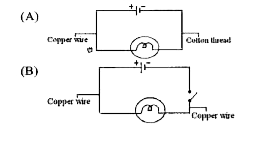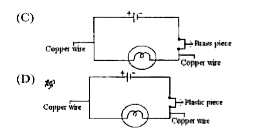In which case does the bulb glow ?
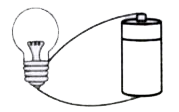

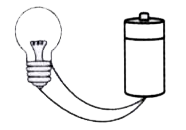
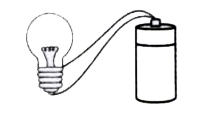
The correct Answer is:A
To determine in which case the bulb glows, we need to analyze the conditions required for a bulb to light up in an electric circuit. Here’s a step-by-step solution:
Step 1: Understanding the Circuit Components
A basic electric circuit consists of a power source (like a battery), connecting wires, and a load (like a bulb). For the bulb to glow, the circuit must be complete, allowing electric current to flow.
Hint: Identify the components of the circuit: power source, wires, and load.
Step 2: Analyzing the Connections
1. Case 1: The positive terminal of the cell is connected to one terminal of the bulb, and the negative terminal of the cell is connected to the other terminal of the bulb. This forms a complete circuit, allowing current to flow through the bulb. Result: The bulb glows.
Hint: Check if both terminals of the bulb are connected to the battery.
2. Case 2: The positive terminal of the cell is connected to one terminal of the bulb, but the negative terminal is not connected to the other terminal of the bulb. This means the circuit is incomplete. Result: The bulb does not glow.
Hint: Ensure both terminals of the bulb have connections to the battery.
3. Case 3: The negative terminal of the battery is connected to the bulb, but the positive terminal is not connected to the other terminal of the bulb. This is also an incomplete circuit. Result: The bulb does not glow.
Hint: Remember that both terminals need to be connected for the circuit to be complete.
4. Case 4: Both terminals of the bulb are connected to the same terminal of the battery. This creates a short circuit, and there is no complete path for the current to flow through the bulb. Result: The bulb does not glow.
Hint: Check if the connections create a loop for the current to flow.
Step 3: Conclusion
The only case where the bulb glows is Case 1, where both terminals of the bulb are properly connected to the positive and negative terminals of the battery, forming a complete circuit.
Final Answer: The bulb glows in Case 1.
A basic electric circuit consists of a power source (like a battery), connecting wires, and a load (like a bulb). For the bulb to glow, the circuit must be complete, allowing electric current to flow.
1. Case 1: The positive terminal of the cell is connected to one terminal of the bulb, and the negative terminal of the cell is connected to the other terminal of the bulb. This forms a complete circuit, allowing current to flow through the bulb. Result: The bulb glows.
Hint: Check if both terminals of the bulb are connected to the battery.
The only case where the bulb glows is Case 1, where both terminals of the bulb are properly connected to the positive and negative terminals of the battery, forming a complete circuit.
Topper's Solved these Questions
- ELECTRICITY AND CIRCUITS BOOK - MTG IIT JEE FOUNDATIONCHAPTER - ELECTRICITY AND CIRCUITS EXERCISE - EXERCISE (Fill in the Blanks )
9 Videos
- ELECTRICITY AND CIRCUITS BOOK - MTG IIT JEE FOUNDATIONCHAPTER - ELECTRICITY AND CIRCUITS EXERCISE - EXERCISE (True or False)
10 Videos
- ELECTRICITY AND CIRCUITS BOOK - MTG IIT JEE FOUNDATIONCHAPTER - ELECTRICITY AND CIRCUITS EXERCISE - EXERCISE (Multiple Choice Questions) LEVEL -1
30 Videos
- FUN WITH MAGNETSBOOK - MTG IIT JEE FOUNDATIONCHAPTER - FUN WITH MAGNETSEXERCISE - Olympaid/HOTS Corner
15 Videos
Similar Questions
Knowledge Check
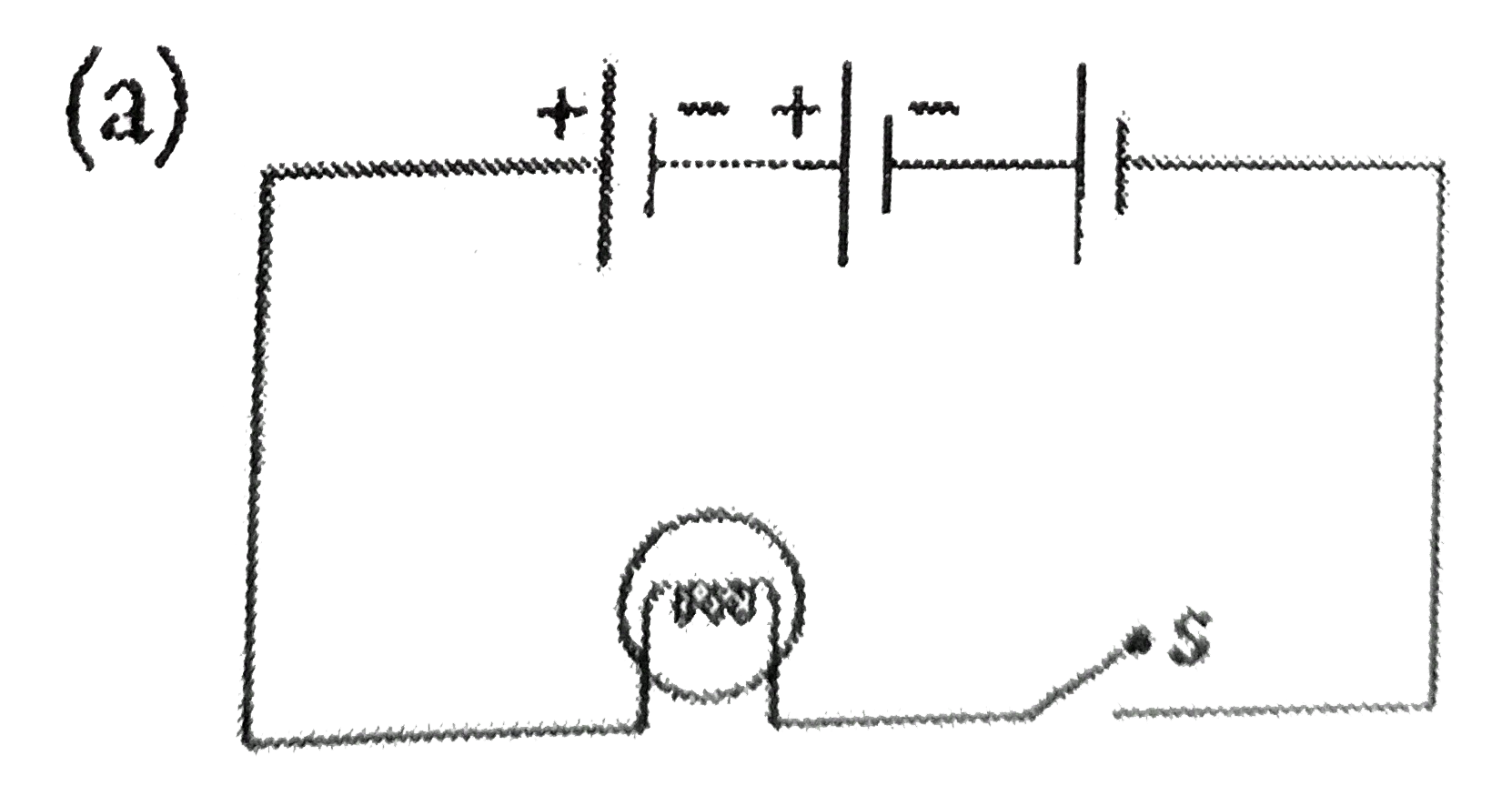
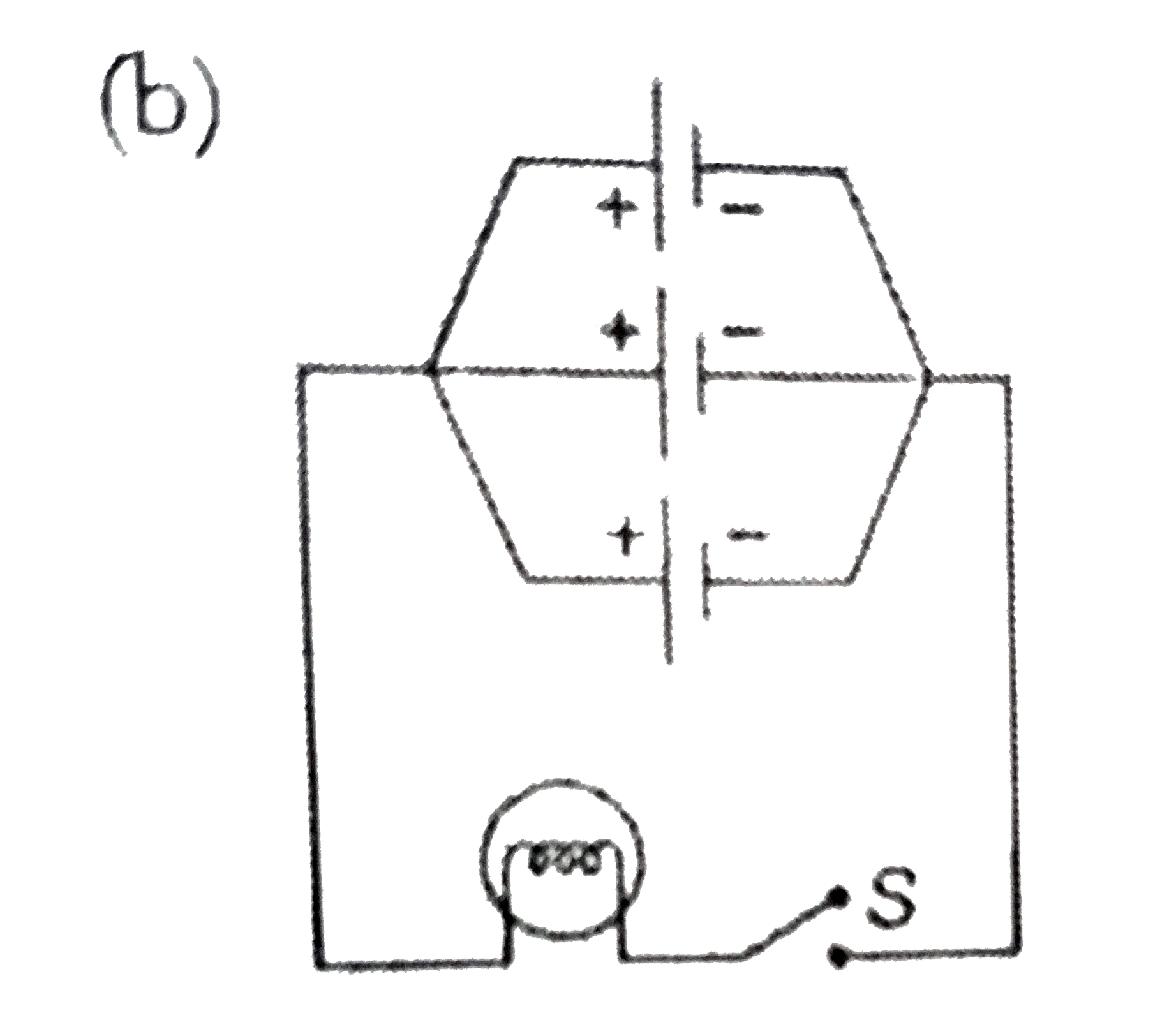

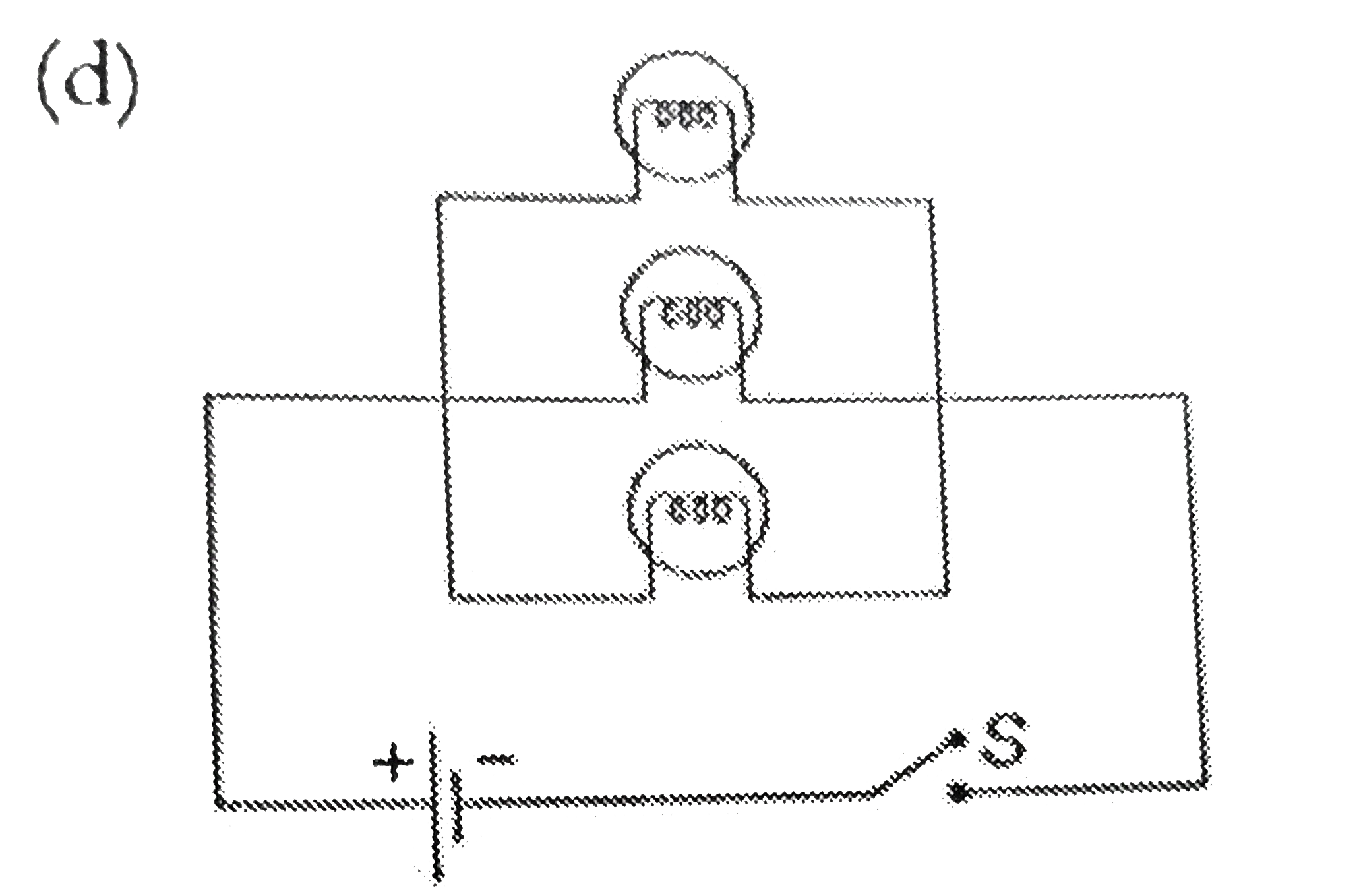
In which of the circuits given below above does the bulbs glow brighter ? (Assume that all bulbs and cells are identical )ACircuit 'a'BCircuit 'b'CCircuit 'c'DCircuit 'd'In the circuit in Fig. 7.27, bulb B does not glow although ammeter A indicates that the current is flowing . Why does the bulb not glow?
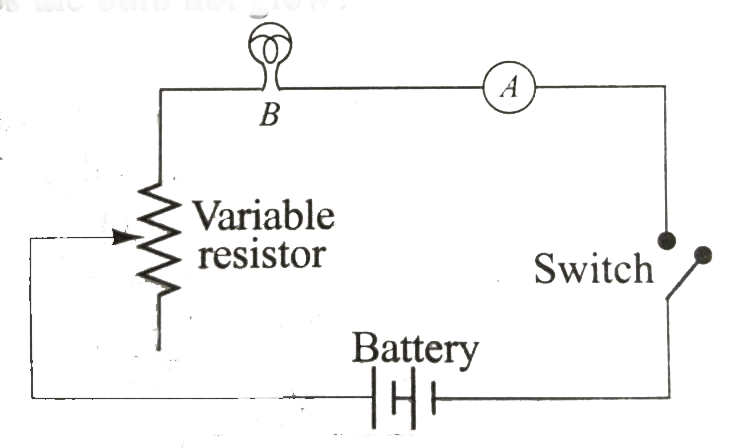 AThe bulb is fused .BtThere is a break in the circuit between bulb and ammeter.CThe variable resistor has too large resistance.DThere is a break in the circuit between the bulb and the variable resistance.
AThe bulb is fused .BtThere is a break in the circuit between bulb and ammeter.CThe variable resistor has too large resistance.DThere is a break in the circuit between the bulb and the variable resistance.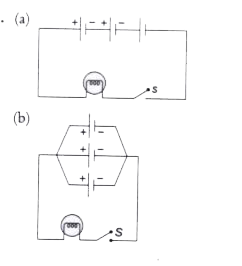

In which of the circuits given above does the bulbs glow brighter? (Assume that all bulbs and cells are identical)ACircuit 'a'BCircuit 'b'CCircuit 'c'DButton cells
In which of the following setups would the bulb glow?
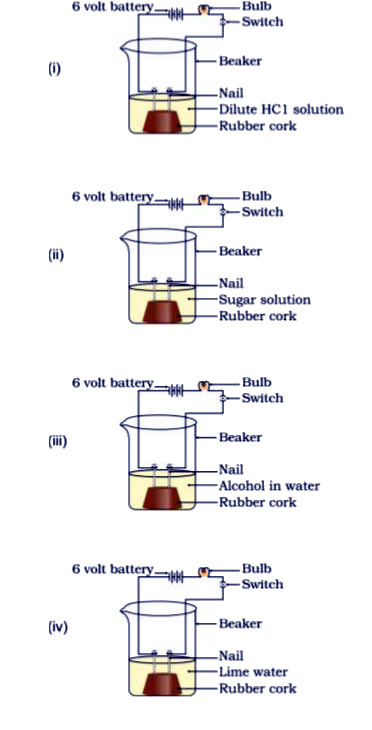
View SolutionThe bulb in the circuit shown in Figure does not glow. Can you identify the problem? Make necessary changes in the circuit to make the bulb glow.
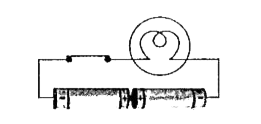
View SolutionThree bulbs of 40, 60 and 100 watt are connected in series with the source of 200 volt. Then which of the bulb will be glowing the most –
View SolutionIn which of the following seups would the bulb glow ?
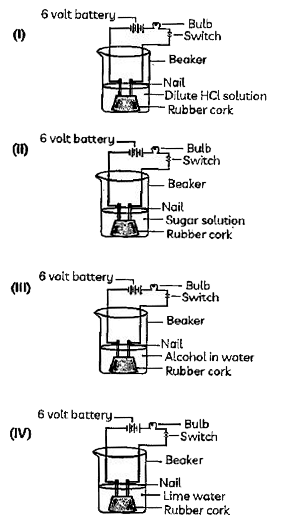
View SolutionWhat is the thin wire In the bulb which glows when an electric current passes through It called?
View Solution

